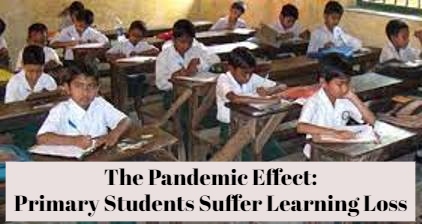

By Our Editorial Team
First publised on 2022-02-11 08:45:55
The education sector has suffered the most due to the disruption caused to the pandemic. Absence of physical classes have meant that a large number of primary students have suffered deep learning losses. Annual Status of Education Report (Aser) by Aser Centre, an initiative of Pratham, for different states has shown how children in classes 1 and 2 are not able to recognize words and numbers. The latest Aser report for West Bengal reinforces the findings.
As per Aser-Bengal, the percentage of children in Class 2 who can read words was 54.8% in 2014 and 66.2% in 2018. It has dropped to just 53% in 2021. Similarly, the percentage of children who could recognize single-digit numbers was 74% in 2014 and 77.8% in 2018. It has dropped to 68.5% in 2021. The gains that were slowly but surely being achieved before the pandemic have been totally washed away by the disruptions.
With schools and colleges for older students (who face other challenges in learning) opening, it is becoming urgent to start in-person classes for the pre-primary, primary and middle school sections too to arrest this decline. It is universally accepted that small children learn better. Hence if schools are kept closed, these children will lose out on learning in their formative years and will be promoted to higher classes (as per the age criteria) even though they are not ready.
Along with reopening schools for younger children, it is required that children who have missed out must be brought up to date with bridge courses and targeted interventions even if they are promoted to a higher class. A special national policy to address loss of learning due to pandemic disruptions is needed to systematically recognize and provide solutions to this problem. Otherwise, educators will apply known methods and they might not be enough.











